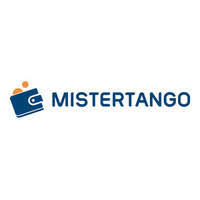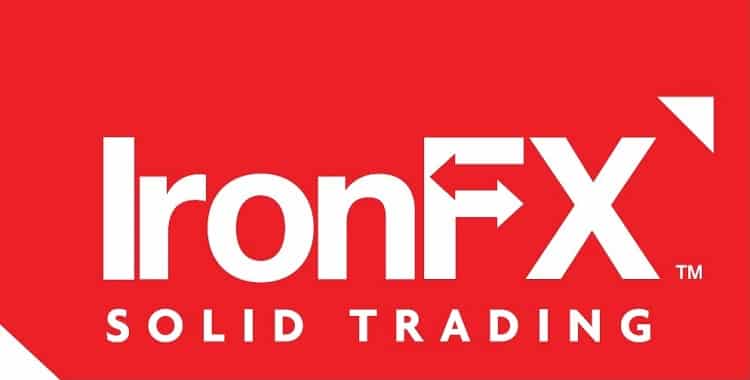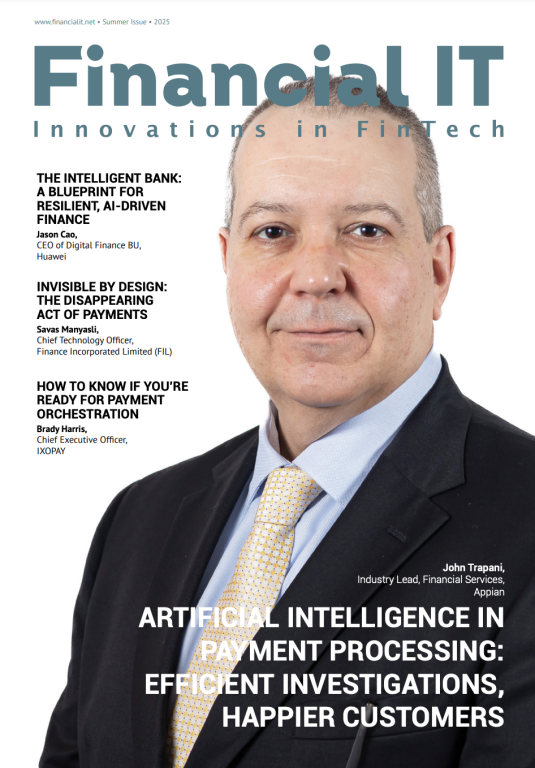Published
- 08:00 am

Today, LogMeIn, Inc. (Nasdaq:LOGM) introduced the next wave of intelligent customer engagement by adding proactive AI and language features to the Bold360 platform. LogMeIn has taken the world-class attributes of Bold360 and created an even more powerful solution with expanded use cases designed to help companies build a highly personalized and relevant customer experience across the digital journey. Bold360 anticipates customer needs and promotes engagements at the right time, in the right way and in the right language. Bringing timely and relevant content across the entire customer journey – from acquisition, through conversion and into post-sale support -- Bold360 provides companies the tools they need to create an exceptional experience for customers around the world.
“Artificial intelligence has already shown great promise in reinventing how businesses tackle customer service and support both in direct communications with the customer and in supporting agents,” said Mary Wardley, VP Customer Care and CRM, at IDC. "The next evolution is proactive AI, where customers can get timely and relevant information throughout their entire journey. As companies continue to implement AI, they have a tremendous opportunity to use the technology – not just for call deflection – but instead to offer the type of concierge-level service that breeds long-term brand loyalty.”
Building on the launch of Bold360 ai earlier this year, today’s announcement reinforces LogMeIn’s commitment to helping companies reimagine how they engage with their customers in a highly-differentiated and scalable way. Proactive AI opens the door for companies to interact with prospects and existing customers in a much more personalized and intelligent way – similar to an in-person experience. It is also ready around the clock with tailored content based on customer analytics and insights so no matter when a customer is ready to connect, so is the business.
What’s New in Bold360
Proactive Engagement: Timely and relevant outreach generates meaningful experiences that establish trust and keeps customers coming back. Bold360’s Proactive AI enables companies to be there for their customers when they need them most, no matter the time of day or the channel of engagement.
Support for a Global Customer Base: Customers are less likely to buy from a company that does not support them in their native language. Bold360 offers a growing base of languages fueled by Natural Language Processing but also includes a native integration with GeoFluent by Lionbridge to make customers, agents, and bots fluent in nearly every language.
One Solution for the Entire Customer Journey: Single-purpose chatbots force companies to invest in multiple technologies, leading to a disjointed customer journey and a poor experience. From marketing, to sales, to care, Bold360 provides a single solution that delivers intelligent, proactive engagement from the first interaction all the way through customer service and support.
“Today we are bringing the personalization of an in-person customer experience to the digital world,” said Paddy Srinivasan, General Manager, Customer Engagement & Support Solutions, LogMeIn. “By putting everything online, we’ve lost the humanity that generally comes with a one on one engagement. Ironically, bots are going to help us bring that back. By adding proactive AI and language support, we are continuing our mission to not only help companies create connections with their customers, but do so at the right time, with the right context and in the right way.”
Related News
- 01:00 am

Mistertango, the first crypto-friendly payment company, today announced the launch of its partners “Offers” platform. The new platform, which is integrated into Mistertango’s website and mobile application, provides customers with access to a range of services and solutions offered by Mistertango’s partners. Mistertango customers will benefit from new, often exclusive offers, and partners have a new channel to market for their products.
Nexo, the world’s most advanced instant crypto loans platform, is the latest partner to join the platform offering access to crypto loans that are disbursed via a SEPA payment directly into existing Mistertango customer accounts. Mistertango customers will be directed to the Nexo platform to register before they are able to receive their loans. The lending pioneer raised $52.5 million from investors earlier this year and follows suit of other crypto-based companies such as Orca Alliance and BTC-Exchange in partnering with Mistertango for its Offers Platform.
The first offers partner was Orca Alliance who’s offer was viewed 4,000 times via the Offers platform and Mistertango became its fifth largest driver of traffic the Orca website. Orca plans to explore how it can work with Mistertango to continue to grow its business.
Gabrielius Bilkštys, Chief Business Development Officer, Mistertango said, “The initial goal for our partner Offers platform is to provide mutual benefit to both partners and our customers. In the longer term we see this as a major step in interconnecting our partners and customers in order to grow the market through a network effect driven by easing access to services as well as the ability to pay for them.”
“Thanks to the Nexo Team’s 10+ years in credit facilitation and automation of processes, Nexo’s crypto loans quickly became a market leader. We partnered up with Mistertango early on, and their incredibly good service, has provided us the tools to service the Euro portion of our loan requests in the most efficient manner,” said Kosta Kantchev, Managing Partner, Nexo. “We are thrilled to take the partnership to new levels with even more integrations to benefit the customers of both services.”
Mistertango has plans to further enhance the platform by displaying multiple offerings from a range of partners to its customers. In addition, Mistertango plans to also make it possible for its customers to pay for partner services directly through its website and mobile application via SEPA transactions, with a view to boosting conversion through streamlined, contextual payments.
Related News
- 04:00 am

A recent report by EY has warned that the financial services sector must revamp its approach to risk management in order to thrive in the digital age. The report said that businesses should be proactively looking for new technologies and adopting risk management to drive profitability.
This involves utilising risk management to implement and access new technologies that would otherwise be too hazardous. The report encourages firms to take more ‘risk-informed’ decisions to adopt new technologies and generate business opportunities. According to Carl Davies, CEO of TmaxSoft UK: “The sector’s failure to optimise risk management to aid digital transformation is indicative in its dependence on mainframe systems. Mainframes still process 70% of the world’s financial transactions, despite their inability to provide many of the functions that consumers now require.
Carl Davies commented, “The mainframe has been the bedrock of most financial services institutions for decades, and while these systems have served their users well during this time, many organisations are finding that they are increasingly failing to provide the functionality they now need.
“Customer expectations are on the rise as fintech companies and challenger banks continue to leverage new and flexible IT systems.While many traditional banks have introduced services such as mobile banking apps and live customer chat services to adapt to the changing consumer demand, many still operate with traditional legacy IT systems that lack the ability to serve their customers with the flexibility they have come to expect. This in turn slows down the pace of innovation. Speed and responsiveness are crucial in an age where real time customer data and insights can make a major impact on businesses’ bottom line.
Davies continued: “If traditional financial institutions are to thrive in the era of digital transformation, they must take the initiative and adopt advanced IT environments that are compatible with the new breed of digital services. Large scale migration projects can be unpopular in some IT departments given the risks involved, but there are ways to manage these issues that make a TSB-style scenario highly unlikely.
“When it comes to moving away from a mainframe system, one of the riskiest tasks is altering programmes and applications, or re-writing code. Re-engineering systems can take years, which means that the scope for error is far-reaching. As a result, businesses can choose to re-host as it enables them to simply lift existing mainframe assets and shift them to new open platforms. Re-hosting is faster, less risky, and helps systems to operate in the exact same way, but many organisations still choose outdated strategies that put them at harm.”
Davies concludes: “As highlighted by the EY report, with the right approach to digital risk management, firms can open doors to a wealth of new technologies that were previously unattainable. Risk management is no longer just about protecting business operations and assets. It’s increasingly responsible for driving business transformation and opportunities in the digital environment.”
Related News
- 06:00 am

The Western Union Company (NYSE: WU), a leader in cross-border, cross-currency money movement, today announced it is has been engaged by Amazon to launch a new payment option that allows international shoppers to pay in person, in local currency where available, for their online purchases. Amazon is focused on providing international customers with access to millions of products.
Western Union’s money movement platform will power a new payment option for cross-border customers shopping on Amazon.com. Customers in select countries will be able to shop on Amazon and pay in person, in local currency, through the Western Union® agent network.
“There are people in the world who want greater access to Amazon’s huge product selection but paying for those purchases has been a real obstacle for many customers,” said Hikmet Ersek, president and CEO of Western Union. “We’re leveraging our money movement platform to make it easier to shop global and pay local. By facilitating the complex foreign exchange and settlement process, we’re opening up more consumer choices and access to online shopping for tens of millions of potential new Amazon customers.”
Expanding Customer Access and Closing the Payments Gap
Forrester Research estimates that cross-border shopping will make up 20% of e-commerce by 2022, with sales reaching $630 billion.1 Choice, quality and cost are the main motivations for consumers to shop online from overseas, but there are challenges and concerns about the lack of payment options for consumers who prefer to pay in person or consumers who are not comfortable using online payment methods.
Customers in select countries will be offered the new payment option on the Amazon checkout page. Shoppers will be sent a code and instructions on how to make the payment at a participating Western Union agent location. Western Union’s platform will also power the process for cash refunds for product returns.
About Western Union’s Cross-Border Platform
Western Union’s cross-border, cross-currency money movement platform – including a robust digital footprint, settlement, treasury and compliance infrastructure, a vast global retail network of over half a million locations, and the ability to send money to billions of accounts and mobile wallets – sets the standard for international money movement. With operations in more than 200 countries and territories, Western Union’s platform processed an average of 32 transactions every second and moved $300 billion in principal across 130 currencies in 2017.
Connecting the digital and physical worlds of money, Western Union’s technology stack, APIs, foreign exchange and settlement engine, agent network, anti-money laundering and fraud detection capabilities make it one of the largest digital and physical money movers for consumers around the globe. The company offers digital transactions in more than 50 countries and territories. Approximately 70% of Western Union’s digital transactions globally now originate on mobile devices.
Related News
- 03:00 am

IronFX has today announced joining forces with PMA. IronFX will add the PMA as a funding (deposit and withdrawal) instrument as well as a base currency for trading on the IronFX platform.
With this decision, IronFX further expands the portfolio of trading assets and funding methods offered to its global client base, while PMA makes an entrance to one of the world’s leading currency trading brands. With 10 platforms trading over 200 instruments in forex, spot metals and CFDs on stocks, futures, indices, and commodities, IronFX serves retail and institutional customers from over 180 countries in Europe, Asia, the Middle East, Africa and Latin America.
Additionally, PMA will be listed on the IronX Exchange, which is expected to launch by the end of December. IronX will operate as a regulated, service-focused exchange, creating a highly efficient trading ecosystem that facilitates funding via both fiat and crypto. At the same time, IronX gets the opportunity to list another successful coin on its regulated exchange. PMA will be traded on IronX next to the ADA coin, the ninth-largest coin in the world by market cap, the IRX token, IronX’s own token as well as other major Coins such BTC, ETH, XRP, and EOS.
PumaPay welcomes the decision of IronX to list the PMA token, as the new platform shapes up to be a top-tier regulated and highly reputable cryptocurrency exchange. IronX has been recently approved for a Crypto regulatory license from the Estonian Financial Intelligence Unit (FIU) and can operate as a regulated exchange for trading cryptocurrencies. The platform can be a provider of a virtual currency against a fiat currency trade service and provide the virtual currency wallet service. The listing by IronX boosts the availability of PMA.
IronX has also announced that following its successful Private Sale of IRX tokens, where more than 22 Million USD has been raised, it will hold its Initial Coin Offering (ICO) on November 1st.
Markos A. Kashiouris, Chairman & CEO of IronFX Group and Founder and Chairman of IronX, commented: ‘As global forward-thinking brands, IronFX and IronX are always on the lookout for new fintech solutions and opportunities in the payment space. We have been actively following latest developments in the blockchain and crypto projects; in this respect, PumaPay has attracted our attention by its innovative technical approach that enables flexibility of billing scenarios that we can potentially offer to our clients. As the PMA token is an important component of the PumaPay ecosystem, we are excited to bring it as a funding and trading instrument to both our traditional margin trading and Crypto platforms’.
Yoav Dror, PumaPay CEO, commented: ‘Since its inception, PumaPay has been putting a great value in building a strong ecosystem and enabling the accessibility of our unique technology. As IronFX and IronX have chosen to join us as Early Adopters, we increase the usability of the PMA, while enabling the customers of these world-leading trading platforms to enjoy the benefits of using the PumaPay solution. It is an honour to have IronFX and IronX among our early adopters, and we are looking forward to the technical implementation of these plans. PumaPay is looking into developing unique solutions for currency exchanges, and we are excited to be sharing these ideas with the forex industry’.
Related News
- 01:00 am

Software intelligence company, Dynatrace, today announced the findings of an independent global survey of 800 CIOs, which reveals that nearly three-quarters (74%) of IT leaders are concerned that Internet of Things (IoT) performance problems could directly impact business operations and significantly damage revenues. This is mostly because 78% of CIOs said there is a risk that their organization will roll-out IoT strategies without having a plan or solution in place to manage the performance of the complex cloud ecosystems that underpin IoT rollouts. In fact, 69% of CIOs predicted that IoT will become a major performance management burden as they struggle to overcome the escalating complexity of their modern enterprise cloud environments.
“Businesses across every industry are eagerly exploring IoT’s potential to engage new markets, drive new revenue and create stronger competitive advantage,” said Dave Anderson, digital performance expert at Dynatrace. “However, IoT ecosystems and delivery chains are intricate and boundless, which creates unprecedented frequency of change, size and complexity in the cloud environments on which they are built. Enterprises are already struggling to master cloud complexity and now IOT substantially magnifies this challenge.”
Download the global CIO report “Overcoming the Complexity of Web-Scale IoT Applications: The Top 5 Challenges” here.
The report looks at the challenges organizations face in maintaining seamless software experiences as they continue to roll-out IoT ecosystems. Key findings include:
The scale of IoT is just too big to manage in a traditional way:
- 73% of CIOs worry that the number of third-parties and internal resources involved in IoT service delivery chains will make it incredibly difficult to identify who is responsible when performance problems arise.
- 52% of CIOs say understanding the impact that IoT platform providers and network operators have on performance is a key challenge to managing user experience in IoT.
- 75% of CIOs are concerned that problems within the platform or network layer that impact the performance of their applications could be hidden from them by an IoT service provider.
It’s impossible to master IoT complexity manually:
- 84% of CIOs believe that AI capabilities and the ability to automate most of the processes that support IoT deployments will play a crucial role in the success of their IoT strategies.
IoT is losing its ability to meet user expectations:
- 70% of CIOs worry that consumer and user expectations for faster, fault free experiences could soon increase beyond what IT teams are able to deliver.
- 69% of CIOs fear losing control over the user experience as the IoT delivery chain continues to become more convoluted.
- 64% of CIOs are worried that the spiraling numbers of wearables could soon make it impossible to manage mobile performance for such devices.
IoT creates new user experience headaches, including:
- Ensuring that IoT device firmware updates and security patches don't have a negative performance impact (62%).
- Having the ability to track application behaviour on IoT devices as they interact with cloud services (60%).
- Understanding the impact of IoT device performance on the user-experience (53%).
- Mapping the rapidly growing IoT ecosystem as it expands (38%).
“If IoT is to deliver on its promise, organizations can’t afford to be overwhelmed by the complexity issues it presents – which is exactly what happens if an enterprise is using a traditional monitoring approach,” adds Anderson. “Platform-specific tools and do-it-yourself solutions aren’t built for web-scale, highly dynamic, complex cloud environments – they leave you cobbling together a mix of solutions which will never add up to a sophisticated platform that gives you a complete view of your environment and automated way of making sense of everything realtime.
“Organizations need a new approach that works at scale and simplifies IoT cloud complexity; a software intelligence platform that uses AI and automation to provide full operational insights into vast ecosystems of IoT sensors, devices, gateways, applications and underlying infrastructure. With answers at their fingertips, rather than just more data on glass, organizations will be poised to enjoy the benefit from all that IOT technologies have to offer.”
To download the global CIO report called “Overcoming the Complexity of Web-Scale IoT Applications: The Top 5 Challenges” please visithttps://dynatrace.ai/iotreport/
This report, commissioned by Dynatrace, is based on a global survey of 800 CIOs in large enterprises with over 1,000 employees, conducted by Vanson Bourne and commissioned by Dynatrace. The sample included 200 respondents in the U.S., 100 in the UK, France, Germany and China, and 50 in Australia, Singapore, Brazil and Mexico respectively.
Related News
- 05:00 am

iwoca, one of Europe’s fastest growing small business lenders, has today successfully released Open Banking for all new customers with a Lloyds Bank account. The company becomes the first ever business lender to connect with any of the UK’s nine largest banks under the Open Banking initiative, launched in January 2018.
By securely linking their Lloyds Bank data, business owners can now provide iwoca up to five years of transaction history with a few quick clicks of a mouse. This speeds up the lender’s already swift application process even further for Lloyds customers, reducing the time they spend submitting bank information to less than 60 seconds.
iwoca was an early participant in the Open Banking initiative, forming a dedicated Open Banking team in January 2018 to seize on the many opportunities the initiative can create for its customers. It was also recognised as a winner of the Open Banking-based Open Up Challenge for developing products deemed most likely to have a positive impact on UK small businesses in 2018 and beyond.
Imran Gulamhuseinwala, OBE, Implementation Trustee at the Open Banking Implementation Entity (OBIE), said: “Products and services powered by Open Banking will, in time, transform the way people and businesses access financial services in the UK. iwoca has seen and seized the opportunities that Open Banking can bring and has been a key player within the ecosystem from the start – engaging with banks and collaborating with other third party providers.
"Its successful connection to Lloyds Bank is another milestone in the Open Banking era and will help revolutionise the way small businesses access financial services. I'm excited to see iwoca's work continue as they open up Open Banking integrations with other providers in the future.”
Christoph Rieche, CEO and co-founder, iwoca said: “Open Banking means high street banks no longer have a monopoly on transaction data. As a result, it’s now easier for small businesses to shop around and find the best financial service to meet their needs, without worrying about the brunt of loan application processes. With Open Banking, getting approved with iwoca is as fast as it is to drink your morning cup of coffee.”
“We worked closely with the Open Banking Implementation Entity and Lloyds Bank to deliver this integration, and we aim to launch future integrations with Barclays, HSBC, RBS, Santander and others within the coming weeks.”
Rieche continued: “But realising the great potential of Open Banking depends on the cooperation of each bank and on small business owners trusting and understanding the Open Banking process. Therefore, it’s critical for banks and Government to do all they can to enable and encourage the adoption of Open Banking. This will create greater competition in small business lending and, as a result, better, fairer services for small business owners.
“Ultimately, we’re excited about the potential for Open Banking. It brings us closer to our vision of making business loans as easy as booking a flight online. Plus, we believe it will help us take a big leap toward achieving our goal to fund one million small businesses – 100,000 of them in the next five years. More successful small businesses means vibrant local communities and stronger economic growth.”
iwoca provides loans of up to £200,000 to small and micro businesses across the UK, Germany and Poland via its website and through partner integrations using its proprietary Lending API and now in the UK through the Open Banking API. With the use of award-winning technology, iwoca wants to make working capital more accessible to business owners across Europe, with a simple mission of expanding what’s possible for them.
Related News
- 09:00 am

Fenergo, the leading provider of Client Lifecycle Management (CLM) software solutions for financial institutions, will deploy its flagship platform, Fenergo CLM, across Natixis’ Corporate and Investment Banking division globally. Natixis is the international corporate and investment banking, asset management, insurance and financial services arm of Groupe BPCE, the second-largest banking group in France.
Fenergo CLM delivers a standardised global Know Your Customer (KYC) policy and procedure. The robust, out-of-the-box regulatory framework spans Anti-Money Laundering (AML), KYC and other KYC classifications (such as MiFID II, FATCA, CRS, Dodd-Frank, EMIR, Canadian Derivatives, Margin Requirements, The Volcker Rule / Loi de Separation Bancaire, QDD/Hire Act (871M), Sec 15a6*, GDPR*) etc. Client and counterparty data and documentation are centralised, facilitating global regulatory rules and increasing the transparency of information across the KYC process, creating a single view of the client. This enables available client information to be reused, reducing the need for superfluous client outreaches.
Marc Vincent, Global Head of Corporate & Investment Banking at Natixis, said: “Our strategy is based around serving our clients’ needs, and our internal agility is central in this respect. By enhancing our processes through digital systems such as Fenergo’s CLM platform, we aim to provide the best possible experience, and ultimately the best possible financial solutions to our clients.”
Marc Murphy, CEO, Fenergo, commented: “With increasing regulatory change and the expectation to deliver an optimum customer experience (cx) we are seeing accelerated demand for CLM amongst financial institutions. Leveraging our platform clients like Natixis can enhance the end-client experience whilst fast-tracking opportunities for revenue.”
Greg Casey, Vice President, EMEA, Fenergo, said: “By joining the Fenergo global CLM platform, Natixis has become an active member of our client engagement community and will join our regulatory, design and CTO forums. Natixis will directly contribute to the Fenergo regulatory and product roadmaps, enhancing our solution set even further. I personally look forward to working closer with Natixis professionals to deliver the next generation of Client Lifecycle Management solutions.”
Related News
- 05:00 am

iSignthis Ltd subsidiary, iSignthis eMoney Ltd, trading as ISXPay® (“the Company”), is pleased to announce that testing of its deposit taking facilities and software systems has been completed. The resultant International Bank Account Number (IBAN) accounts will shortly be online and IBAN accounts will be interbank network locatable via ISXPay’s SWIFT / Bank Institution Code (BIC) ISEMCY22XXX.
ISXPay can from 4th December accept deposits directly as a monetary financial institution, with customers at other monetary financial institutions able to route funds directly to ISXPay eMoney accounts (EMA) holders, by referencing ISXPay’s BIC ISEMCY22XXX, and the EMA customer’s account name and IBAN.
The facilities allow the Company to;
open Euro (€) denominated eMoney accounts (EMA), in the name of legal or natural persons
allocate global network locatable international bank account numbers (IBANs) to those accounts
electronically accept and transfer funds from/to any of the ~4200 SEPA1 scheme connected banks and
branches in the EU28, EEA including Norway, Lichtenstein, Monaco, San Marino, Iceland and Switzerland
provide zero credit risk facilities to ISXPay depositing customers, under the Eurosystem of central banking
utilise central banking to accept Euro (€) settlements from card and payment schemes, directly into its own
ISXPay accounts, removing reliance on third party banks for ISXPay clearing and settlement processes.
The service is due to be live across the SEPA by no later than 4th December 2018, being the date the Pan European Clearing House (PEACH) will complete batch updates and broadcasts to its member banks. SWIFT and EPC2 member banks have already been notified as at 26th October, as part of finalising the SEPA testing process, with ISXPay being network locatable and visible to some banks already.
Commercial Update & Model
The Company has completed due diligence on a number of corporate customers and will finalise the opening of approximately 25 corporate accounts this week and next, representing estimated annual gross profit contribution for the company in excess of $4m. Further corporate applications are being processed.
The Company is focussed on servicing corporate customers initially with eMoney services, with EMA services to the general public by Q2 2019. ISXPay will also offer eMoney accounts in other currency denominations, and in particular USD$, GBP£, HKD$, SGD$, CAD$, AUD$ and CHF, by Q2 2019.
Corporate EMA facilities are managed from our Cyprus office, via a private banking style relationship management, specifically tailored for our customers in the Adult, CFD, FX, spread-betting, Money Service, Remittance, Wagering and eGaming industries, and their affiliates.
Revenues are based upon the following fee structure;
Service Fee - % Fee for all external inflows into the EMA account
Service fee - Discounted % Fee for all internal EMA to EMA inflows
Daily Holding Fee (Zero Credit Risk) - Overnight EURO LIBOR rate for balances held with Central Bank
Payout Fee - Flat Fee for Outbound transfers via SEPA
iSignthis CEO, John Karantzis, said “ISXPay’s ability to open IBAN based eMoney accounts is a game changer for payments in the EEA. AML regulated sector corporate customers now have a zero-credit risk option for deposits, connected to the ISXPay payment processing and PaydentityTM identity verification platforms. The integration of the Probanx.com CorePlus core banking module later this year will provide our customers with advanced online banking facilities, including for redemption of eMoney issued by ISXPay. Once accounts are established, funds can be transferred by our corporate customers and their retail customers, to and from ISXPay EMA IBAN accounts, just like a conventional bank. IBANs can now be linked to our card acceptance and alternative payment method services, providing a comprehensive transactional banking service for our merchants and corporate customers, and shortly also for retail customers.”
Related News
- 02:00 am

Personal finance comparison website GoBear and smartphone - based alternative credit scoring provider CredoLab announced today the launch of Easy Apply, a smartphone app that enables banks, financial institutions and lenders to extend credit to a larger pool of customers while keeping risks in check. The partnership signifies an important headway in making financial services accessible to more than 110M1 underbanked people in emerging Southeast Asian (SEA) markets.
The Easy Apply app will be launched across four of the largest underbanked markets in SEA – Indonesia, Philippines, Thailand and Vietnam – where around 65 to 75 per cent of the population2, of whom many are creditworthy consumers, are without access to credit.
The app will utilise CredoLab’s AI based proprietary algorithms that extract and analyse over tens of thousands of data points from applicants’ smartphones, turning these completely anonymised ‘digital footprints’ into predictive credit scorecards to be used in their credit card, loan or insurance applications. The use of non-traditional smartphone data for credit scoring provides applicants from all demographics - including the underbanked who have little to no traditional credit history – greater access to financial services such as credit cards, personal loans, and other forms of unsecured credit.
Adrian Chng, CEO, GoBear, said, “There is a massive market opportunity here in Southeast Asia to continue improving financial inclusion by constantly innovating solutions. Our partnership with CredoLab will bridge the divide between the underbanked and financial institutions by giving both parties access to the right technology at the right moment to create better outcomes.”
Peter Barcak, co-founder & CEO, CredoLab, said, “We are excited to be partnering with GoBear to help banks profitably serve their customers including the underbanked. Since our launch in 2016, through our use of non-traditional alternative data points, we have seen a significant drop in cost of risk, helped reduced the time-to-yes to a few seconds, and achieved almost 45% increase in approval rates. I am optimistic that we can achieve similar results through this partnership.”









